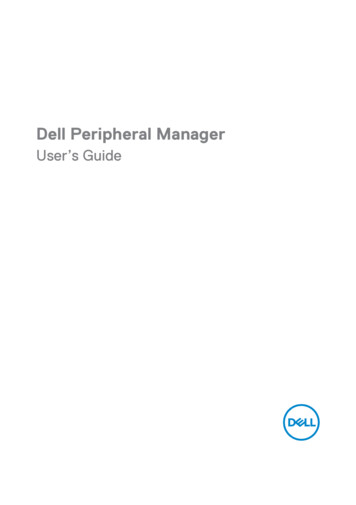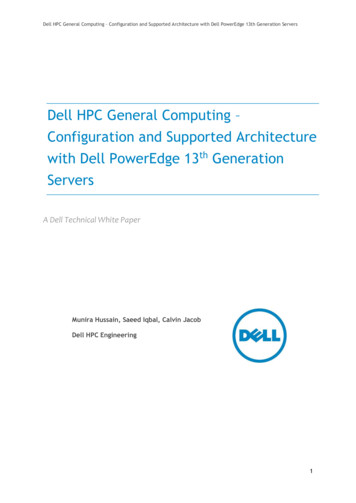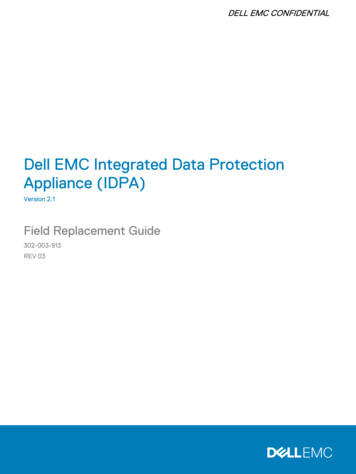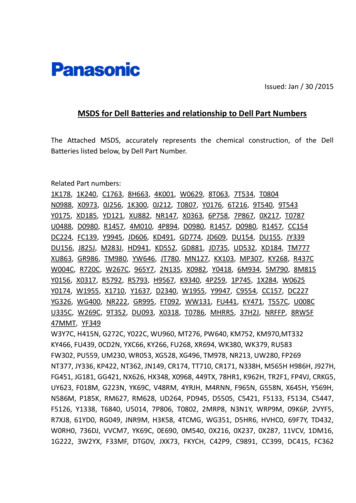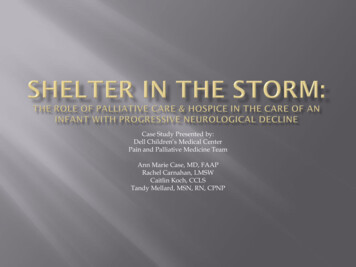
Transcription
Case Study Presented by:Dell Children’s Medical CenterPain and Palliative Medicine TeamAnn Marie Case, MD, FAAPRachel Carnahan, LMSWCaitlin Koch, CCLSTandy Mellard, MSN, RN, CPNP
As we tell you the story of beautiful infant “A.J.”think about: How this case could have been handled differently toimprove outcomes?What alternatives to the medical/surgical managementof this infant and others like her were there?What could have been done to coordinate care better?How could we have made decision making easier for thefamily?What would have improved communication andcontinuity of care?
The story of “A.J.”A.J. suffered a prenatal hypoxic injury of unknownetiology and then developed seizures on day 1 oflife. 2 month stay in the NICU at an outside facility.Her PCP referred the family to Palliative Medicineat 3 months of age after discharge.Apnea at home Suspected life limiting trajectory of hypoxic brain injury
We met A.J. and her parents in our PICU aftertracheotomy and g-tube placement Her care was complex from the beginning andimpacted by: Multiple disciplines Discuss the impact of ancillary services such as SocialWork, Child Life, other Several subspecialty care teamsNursing staff and management
When would have been the best time to referA.J. to Palliative Medicine? A. Pre-natalB. NICUC. Trach Clinic appointmentD. PICU/acute care service
Requests from all services and nursing to help withadvanced care planning beginning with the PICU Advanced care planning process for A.J. was impactedby: Difficult family dynamicsCPS involvementStaff and provider assumptions, biasesCommunicationDecision making in the context of such difficult familydynamics.
Advanced care planning is most improved by A. Early referral to Palliative Medicine.B. Gentle, supportive and understanding efforts bynursing and subspecialists to change code statuseach admission.C. Multiple care conferences.D. Coordinated care that helps families assessintervention by looking at the “big picture”.
A.J. was referred to hospice care at 8 months ofage after multiple extended re-admissions There were several confounding factors in herhospice referral: Barriers to early hospice referral with this family.Identification of follow up difficulties Subspecialty outpatient care Hospice care planning and treatment Difficulties in symptom management and end of lifecare.
What is the biggest barrier to hospice care inthis case and many other pediatric patients?A. Delayed acceptance of a terminal condition by herparents. B. Poor socioeconomic status. C. Cultural and religious beliefs that delayadmission to hospice care. D. Rural, difficult to reach location of the home. Reference: Linton, J. M. & Feudtner, C. (2008). What accounts for differences or disparities inpediatric palliative and end of life care? A systematic review focusing on possible multilevelmechanisms. Pediatrics 2008;122;574. DOI: 10.1542/peds.2007-3042
In conclusion –The story of A.J. is not unlike that of childrenyou will meet in your own practice. What “pearls” have we all learned from her lifestory?Last thoughts on how the short life of A.J. willimpact your team going forward? Your practice as individual?
Thank you for your insights and participation!Dell Children’s Medical CenterPain & Palliative Medicine Program4900 Mueller BoulevardAustin, Texas 78723512-324-0197
The story of "A.J." A.J. suffered a prenatal hypoxic injury of unknown etiology and then developed seizures on day 1 of life. 2 month stay in the NICU at an outside facility. Her PCP referred the family to Palliative Medicine at 3 months of age after discharge. Apnea at home Suspected life limiting trajectory of hypoxic brain injury



